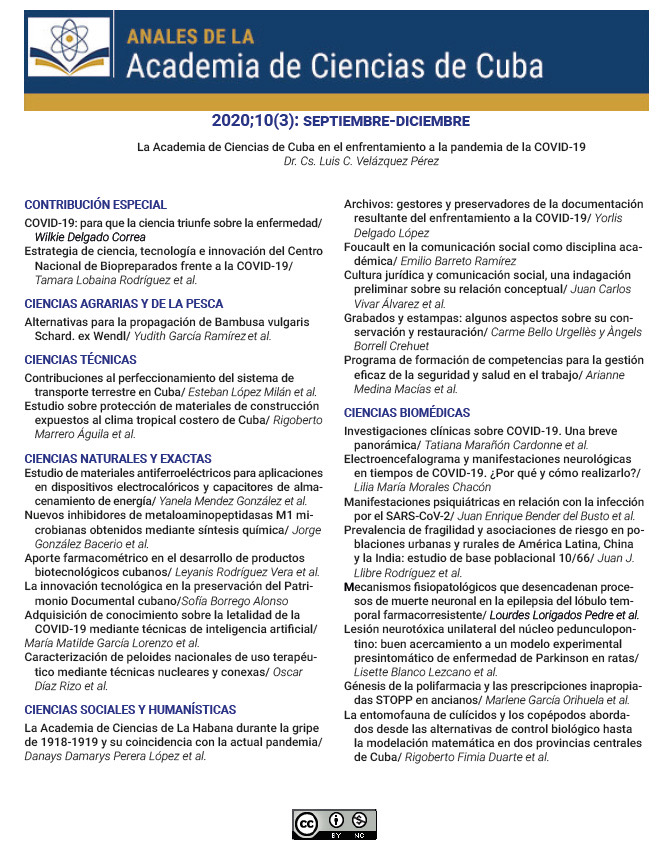Genesis of polypharmacy and inappropriate STOPP prescriptions in the elderly
Keywords:
polypharmacy, inappropriate prescription, elderly, drugAbstract
Introduction. The most frequent medical act to try to diagnose, alleviate or cure most diseases is the pharmacological prescription. The complex situation of the elderly requires a comprehensive assessment to avoid inappropriate prescriptions and the presence of polypharmacy. Both aspects bring on dire consequences for the elderly, their family and the health care system. Objective: To identify inappropriate prescriptions and estimate the factors that favor polypharmacy at admission and discharge of hospitalized elderly people.Method. Quasi-experimental research, before-after study, which collected information on biomedical, social and functional variables from the medical records of 200 hospitalized patients at the Center for Research on Longevity, Aging and Health. The STOPP criteria were used to identify potentially inappropriate prescriptions. Descriptive and inferential statistics tests were performed (α = 0.05).
Results. Drugs with anticholinergic properties (18.0%), non-steroidal anti-inflammatory drugs (17.1%), and benzodiazepines (13.1%) were the most inappropriately prescribed drugs. Polypharmacy was present in 43.0% of the elderly at admission and comorbidity greater than six (OR = 7.34; p = 0.000), the condition of being alone (OR = 4.59; p = 0.033) and two or more inappropriate prescriptions (OR = 4.48; p = 0.000) were the variables with the greatest association with polypharmacy. At discharge, only comorbidity showed a clinical and statistical association (OR = 7.33; p = 0.000). The usefulness of the STOPP criteria in the investigation of inappropriate prescriptions in the treatment at admission and discharge of hospitalized Cuban elderly is confirmed. Comorbidity is the factor most associated with polypharmacy in the elderly in both stages.
Downloads
Published
How to Cite
Issue
Section
License
The journal Anales de la Academia de Ciencias de Cuba protects copyright, and operates with a Creative Commons License 4.0 (Creative Commons Attribution-NonCommercial License 4.0). By publishing in it, authors allow themselves to copy, reproduce, distribute, publicly communicate their work and generate derivative works, as long as the original author is cited and acknowledged. They do not allow, however, the use of the original work for commercial or lucrative purposes.
The authors authorize the publication of their writings, retaining the authorship rights, and assigning and transferring to the magazine all the rights protected by the intellectual property laws that govern in Cuba, which imply editing to disseminate the work.
Authors may establish additional agreements for the non-exclusive distribution of the version of the work published in the journal (for example, placing it in an institutional repository or publishing it in a book), with recognition of having been first published in this journal.
To learn more, see https://creativecommons.org






